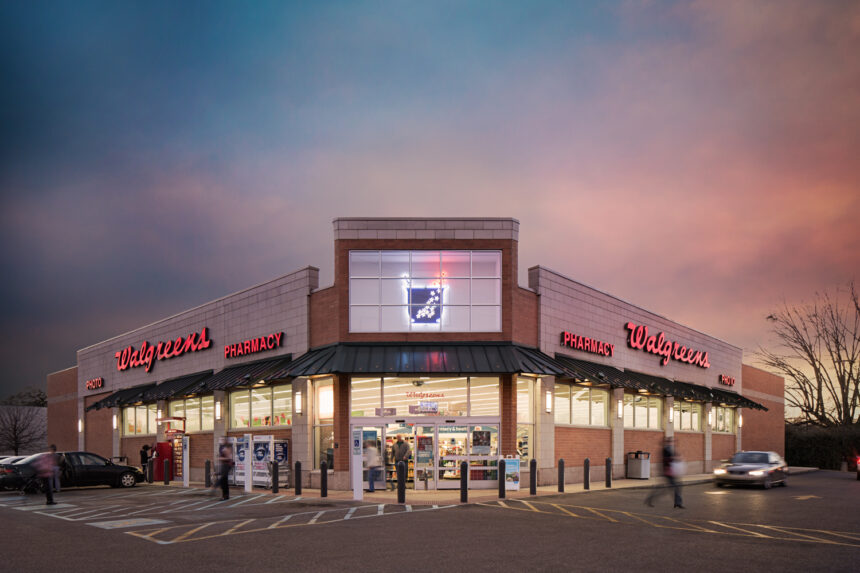As the pharmacy sector continues to face challenges, Walgreens is embracing automation as part of its strategy to streamline operations, reduce costs, and free up its pharmacists for more patient-focused tasks. The company is significantly expanding its network of micro-fulfilment centers, which employ robots to fill prescriptions for patients with chronic conditions such as diabetes and high blood pressure. This move is set to improve operational efficiency while enabling pharmacy staff to dedicate more time to clinical services like vaccinations and health screenings.
Expansion of Robotic Pharmacy Filling
Walgreens first introduced robot-powered micro-fulfilment centres in 2021 but paused their expansion in 2023 to focus on refining the system. After a year of improving the technology and gathering feedback, Walgreens is ready to roll out its expanded automation strategy. The company’s goal is to have its 11 micro-fulfilment centers serving over 5,000 retail stores by the end of 2024, up from 4,300 stores in late 2023. As of February 2024, these centers handle approximately 40% of the prescription volume at the pharmacies they serve, translating to around 16 million prescriptions filled monthly.
This initiative is particularly important in light of Walgreens’ upcoming shift to a private company under a $10 billion deal with Sycamore Partners. The move is part of Walgreens’ efforts to recover from financial struggles marked by challenges such as declining pharmacy reimbursement rates and growing competition from online retail giants like Amazon and rivals such as CVS Health.
Read More: Texas Secures Landmark $1.38 Billion Settlement with Google Over Data Privacy Violations
Impact on Pharmacy Staff and Operational Efficiency
The automation of prescription filling is helping Walgreens address key challenges related to employee burnout and chronic understaffing, which have plagued the pharmacy industry. In 2023, national walkouts highlighted the issue of pharmacist burnout, prompting retail pharmacy chains to reevaluate their business models. Walgreens’ investment in robotic systems has already produced significant savings, reportedly around $500 million, by cutting excess inventory and improving operational efficiency.
Pharmacy staff at stores using the micro-fulfilment centers are also reporting a marked increase in their ability to deliver clinical services. Walgreens claims these stores are administering 40% more vaccines than those that do not use the robotic systems. By reducing the time spent on routine tasks such as filling prescriptions, pharmacists are able to focus on more meaningful interactions with patients, helping to improve care and outcomes.
Rick Gates, Walgreens’ chief pharmacy officer, emphasized the positive impact of the technology on workload and patient care. “Right now, they’re the backbone to really help us offset some of the workload in our stores, to allow more time for our pharmacists and technicians to spend time with patients,” Gates said. The increased flexibility provided by the micro-fulfilment centers is expected to reduce costs, increase the speed of therapy, and improve overall patient care.
Also Read: Maldives Partners with Dubai’s MBS Global to Build $8.8 Billion Financial Centre
A Competitive Advantage in the Pharmacy Industry
Walgreens’ micro-fulfillment centers are giving the company a competitive edge in an industry where independent pharmacies and many larger rivals lack centralized automation systems. However, the technology is not without its risks. The complex robotics used in the centers can lead to disruptions if errors occur. Nevertheless, micro-fulfillment is becoming a permanent fixture in retail due to the significant cost savings it offers, its ability to streamline workflows, and its potential to provide faster service to customers.
Walmart, Albertsons, and Kroger have also explored or implemented their own micro-fulfillment systems, some focused on dispensing prescriptions and others on grocery items. As competition intensifies, the ability to leverage automation to optimize operations and reduce costs will likely be a deciding factor in the long-term success of these companies.
The Future of Robotic Automation in Retail Pharmacy
With the continued rise of online retail and changing consumer expectations, robotic automation is increasingly becoming a key component of the retail pharmacy model. By investing in micro-fulfillment centers, Walgreens is positioning itself to compete more effectively in the evolving healthcare landscape, where efficiency, cost-effectiveness, and patient-centered care are paramount.
As Walgreens continues to expand its use of robotic technology, it is not only aiming to cut costs and improve efficiency but also striving to build a future where pharmacists can spend more time delivering the personalized care patients need. This move could ultimately redefine the role of pharmacy staff and help Walgreens carve out a stronger position in an increasingly competitive market.
Click Here for more business news.






